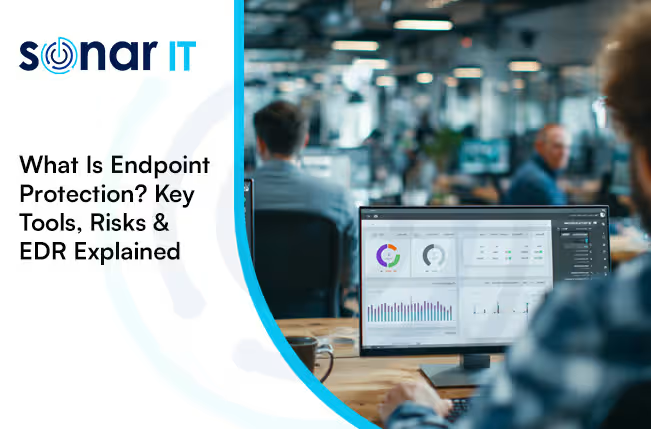Your business is losing hundreds of hours to spam every year
Spam Emails: The Hidden Drain on Productivity and Security
Spam email productivity, email security best practices, and employee time loss due to junk mail are more than just tech annoyances—they’re serious business challenges.
Why Spam Emails Hurt More Than Just Moods
We all loathe spam emails. They clutter inboxes, waste time, and distract from important work. But beyond the annoyance of clicking “Delete”—spam emails are a hidden productivity killer.
According to recent research, employees may lose up to 80 hours per year filtering out spam emails and cleaning their inboxes. That’s essentially two work weeks of lost productivity per person.
Let’s break it down:
- Spam emails can account for 45–85% of all daily email traffic.
- Malicious spam may include phishing links or malware attachments.
- Even at a moderate pace, deletion tasks consume valuable time that could be spent on productive work.
The Real Cost: Hours and Security at Risk
⚠️ Productivity Impact
Imagine an employee receiving ~30 external emails per day. That’s about 150 work emails per week. If roughly 20% are spam, they’ll spend around five wasted hours per year deleting junk. This scales sharply:
- ~60 emails/day → ~11 hours/year lost
- 100+ emails/day → up to 80 hours/year lost
Multiply that across your team, and the true cost becomes staggering. Lost focus, missed deadlines, and reduced morale can all stem from this ongoing, avoidable issue.
🔐 Security Threats
Spam isn’t just annoying—it’s often dangerous. Phishing attempts within spam can trick users into:
- Clicking malicious links
- Submitting confidential data
- Downloading malware or ransomware
These threats put your organisation’s data, reputation, and operations at risk. Having robust email security best practices in place is not optional—it’s essential.
Common Spam Scenarios and Their Impact
1. High-volume inboxes
Role-based addresses or public-facing departments (like sales or support) often receive massive email loads. This exposes them to repeated spam and increases filtration overhead.
2. Phishing and malware risk
Some spam is crafted specifically to mimic legitimate communications—asking users to reset passwords, download a PDF, or update payment info. Discerning the real from the fake adds mental load and creates potential liabilities.
3. Opportunistic overflow
Temporary campaigns, public postings of emails online, or contact with unknown third parties can flood inboxes with spam, reducing signal-to-noise ratio and wasting valuable employee time.
How to Reduce Spam and Reclaim Hours
✅ Use Built-In Spam Filters
Most email providers offer robust spam and junk email filtering:
- Microsoft 365 / Office 365 includes Exchange Online Protection
- Gmail Workspace has advanced spam and phishing filters
- Third-party services can supplement basic filtering where necessary
Make sure your filtering settings are configured correctly:
- Activate spam quarantine
- Review allowed/blocked senders lists
- Implement sender policy frameworks (SPF, DKIM, DMARC)
These steps are foundational to minimising manual spam deletion and reducing email load.
✅ Deploy Anti-Spam and Anti-Phishing Tools
Beyond built-in filters, some dedicated software solutions offer enhanced protection:
- Email gateways that filter and quarantine threats
- Browser or endpoint tools that detect phishing attempts
- AI-powered tools that adapt to new spam campaigns
These tools not only stop junk before it hits your inbox—they help reduce the risk of malicious content reaching your team.
✅ Provide Ongoing Staff Education
Technology alone isn’t enough. People need to know how to recognise and safely handle spam:
- 🎓 Train employees to spot phishing red flags
- 🚫 Teach never to click suspicious links or download unexpected attachments
- 🧹 Encourage best practices for deleting or reporting spam
- 🔁 Reinforce with regular reminders and simulated phishing tests
An alert and educated workforce is your strongest line of defence—saving time and protecting your data.
✅ Use Whitelists and Trusted Domains
Allowing trusted senders (like vendors or partners) and blocking unknown domains can streamline inbox traffic:
- Maintain a whitelist of approved email addresses or domains
- Block domains known for spam activity
- Regularly audit these lists to adapt to changing relationships
This approach helps reduce the volume of unwanted messages by ensuring only relevant communications reach employees.
Bonus Techniques to Further Cut Spam Overhead
🧠 Leverage AI Text Classification
Modern mail filtering systems can employ machine learning to detect context-based threats rather than relying on basic keyword matching. These AI-driven filters adapt to new scam patterns and automatically block emerging threats.
📱 Monitor and Report Suspicious Activity
Encourage users to forward suspected phishing emails to IT or security teams. This feedback loop helps improve filters and raises awareness across the organisation.
🧼 Clean and Clear Email Hygiene
Set guidelines for unsubscribing from newsletters and mailing lists regularly. Reducing even legitimate bulk mail cleans up inboxes and lessens cognitive load.
🔁 Route Role-based Emails via Shared Mailboxes
Shared inboxes for customer service or public addresses can have stricter filtering rules and shared deletion duties, reducing individual spam burden and improving team visibility.
Summing Up: Why Tackling Spam Matters
🚀 Reclaim Time
With each employee potentially saving between 5–80 hours annually, a whole team could reclaim weeks of productivity lost to spam filtering—time that can be reallocated to mission-critical work.
🔐 Strengthen Security
Robust spam defence helps prevent phishing attacks, malware infections, and social engineering threats—protecting your business reputation and sensitive data.
🏆 Improve Staff Focus
A cleaner inbox means fewer distractions, less decision fatigue, and a more focused, happier workforce.
How Sonar IT Can Help You Fight Spam Email Waste
At Sonar IT, we specialise in helping businesses reduce spam email disruption while improving email security and productivity. Here’s how we support companies like yours:
- Conduct audits of your email traffic and filtering performance
- Implement or fine-tune anti-spam and phishing tools
- Train your staff on email security best practices
- Design email policies and whitelists aligned with your business needs
- Offer ongoing monitoring and support to keep threats at bay
Take Action: Combat Spam, Restore Productivity
If spam email is silently draining your team's time and increasing your security risk, it’s time to act. A combination of built-in filtering, advanced tools, and user awareness yields measurable results—sometimes recovering up to 80 hours per person per year.
👉 Contact Sonar IT today for a free overview of your email hygiene environment. Let’s help you banish spam, avoid malware threats, and get those lost hours back where they belong.
.svg)






